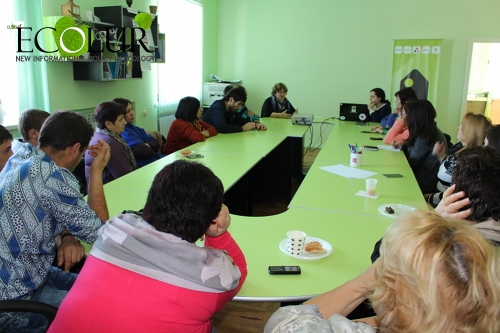

EcoLur
To what extent the energy policy run by Armenia complies with the opportunities and needs of the population in the country? This question was discussed in Gegharkounik Region during EcoLur team's meeting with the residents of Martuni Town, Litchq and Geghhovit communities.
Gegharkounik Speaking
Anahit Gevorgyan, 'Martuni Women's Community Council' NGO President, 'As wood fuel - 70%, as prices for gas and electricity are very high. These prices are not affordable. Putting wood oven in one room and sleeping there is not heating. If the same family heats all house, not 10 but 110 cum wood will be required. Kizyak is also used as fuel, which they make from dung. At night they don't use ovens to save wood and wrap their feet. That's the situation. There is poem – it's not dying, but not living. In the same way, it's not heating and enjoying, it's just not dying from cold. If we use gas, for example, my family, so as to be able to go from kitchen to bathroom, from bathroom to bedroom, from bedroom to living room we should use gas for 200,000 AMD. But how can we afford it? We don't have such an income to pay for the gas and to live normally.'
Geghhovit community resident, '90% of our community has gas supply, but we heat our house with gas. We buy wood for around 200,000 AMD for 6 months.'
Litchq community resident, 'Sirvan' NGO President Hamlet Hakobyan,
'Our community is mainly supplied with gas, we use gas heaters, but this year people have imported wood ovens from Russia and want to have them replaced, as burning wood is much more beneficial. Besides, they also burn kizyak. They can burn a whole truck of kizyak and use it together with wood, as it helps to save. There are 3-4 farms in our community, which sell kizyak, dry it and make it fuel. One truck of kizyak costs around 50,000 AMD.'
Martuni Town resident, 'Whole Martuni community burns wood for 8 months till the end of May, sometimes even up to June. This year people dismantled their ovens only on 15 June. They use wood oven to hear one or two rooms only.'
Martuni Town resident, 'Insecure families don't buy any fuel wood, but they collect dry wood from forests during whole summer. A poor family spends only 10,000-15,000 AMD per month for gas, electricity and wood for winter. A poor family uses wood to cook, take a bath, for everything.'
Anahit Gevorgyan, 'Martuni Women's Community Council' NGO President, 'We use natural resources for NGOs, but electricity has the same price for people leaving on the shore of Lake Sevan – not a dram less... We don't live in Ararat Valley, our fields don't give crops three times a year. We live here on water and fish. The SHPP constructed on the Argitchi River broke down 5 times and our potato and wheat fields were flooded five times.'
Gegharkounik Region with a population of 238,000 has few forests. Regional communities don't enjoy the privileges granted to near-forest communities – 8 cum of free-of-charge fallen deadwood. At the same time, the climatic conditions in the region are very harsh – 8 months of winter. People have to heat their houses with fuel wood bought from other regions. They can't make use of the advantages of rich water resources existing in the region to receive and use electricity. The water of Lake Sevan is used with 7 SHPPs of Sevan-Hrazdan Cascade. The hydroresource of the rivers flowing into Lake Sevan is used with SHPPs. All the produced electricity is bought by monopolist 'Armenian Electric Networks' CJSC, which sells it to residents at a set tariff. High gas price is also dictated by another monopolist 'Gasprom Armenia' CJSC. The tariff policy of these two monopolist companies doesn't comply with the financial opportunities of the population and causes social tension especially in poor communities.
Gegharkounik Region has five town and 87 village communities, where people mainly deal with agriculture and fishing.






January 10, 2017 at 16:46
